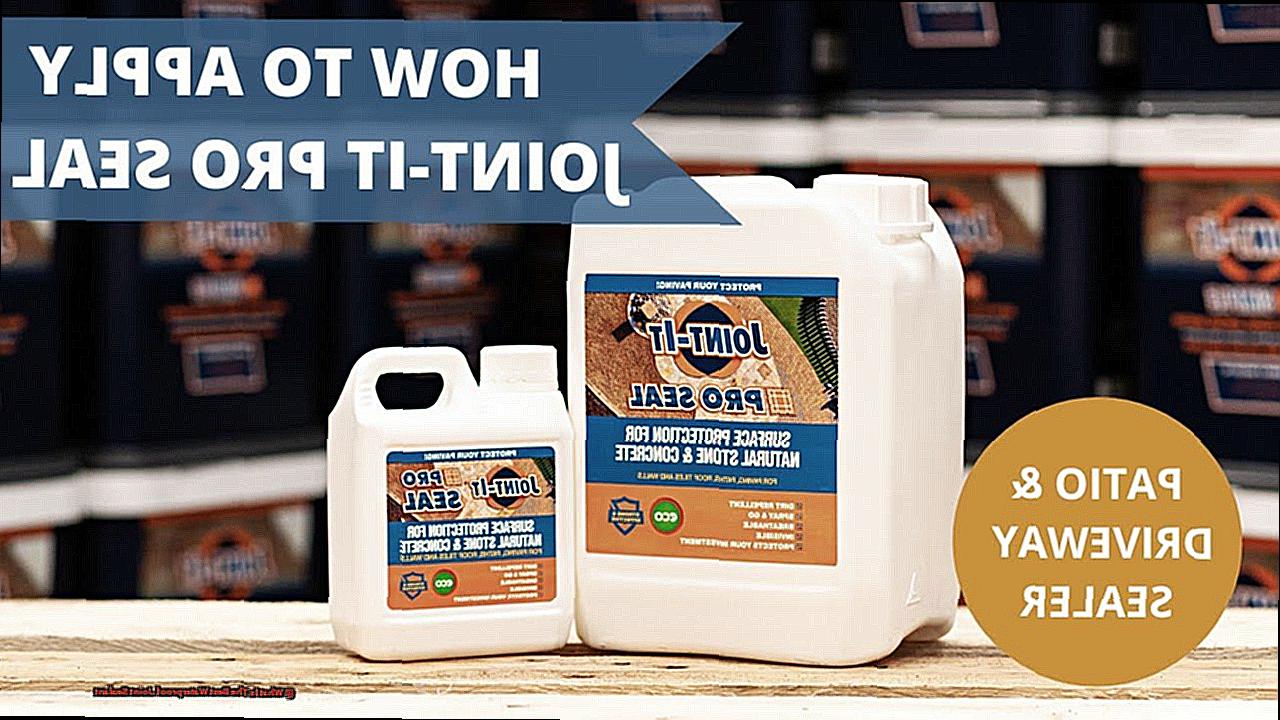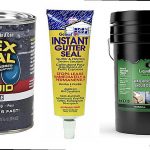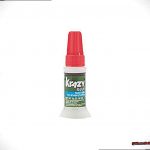Are you tired of constantly dealing with leaks and water damage in your home? It’s time to turn to the world of waterproof joint sealants. But with so many options available, selecting the right one can be a daunting task. Don’t worry, we’re here to help you navigate through the vast array of sealants and choose the best one for your needs.
Before we dive into our top picks, let’s first understand what a joint sealant is. Essentially, it’s a material used to fill and seal gaps or joints between two surfaces, preventing the entry of water or other elements. A waterproof joint sealant is specifically designed to resist water and other liquids, making it perfect for tackling leaks and water damage.
There are several factors to consider when choosing the best waterproof joint sealant for your project. These include the type of surface you are sealing, the type of joint you are filling, the location of the joint, and how much water resistance is required. Not all sealants work equally well on every surface; some may be better suited for wood or ceramic while others may be ideal for indoor vs outdoor use.
In this blog post, we’ll explore some of the top options for waterproof joint sealants on the market today. From silicone to polyurethane, we’ll cover each type’s pros and cons and provide all the information you need to make an informed decision that fits your specific needs. So let’s get started.
What is a Waterproof Joint Sealant?
Contents
Look no further. A waterproof joint sealant is the perfect material to create a watertight seal that will keep your surfaces dry and free from water damage.
Waterproof joint sealants come in different forms, including silicone, polyurethane, and acrylic. Silicone sealants are the most commonly used type and are known for their flexibility and durability. They are ideal for sealing joints that experience movement and can withstand extreme temperatures. Polyurethane sealants are also flexible and durable, but they are better suited for sealing joints that require high strength. Acrylic sealants are the least expensive of the three types and are best suited for indoor use only.
It’s important to choose the right type of sealant for your specific project needs. Consider factors such as the type of material being sealed, the location of the joint, and the level of exposure to water and other substances. For instance, if you’re sealing an outdoor joint, consider a sealant that can withstand UV rays, extreme temperatures, and moisture. Whereas, if you’re sealing an indoor joint, consider a sealant that can withstand normal wear and tear without cracking or shrinking.
When selecting a waterproof joint sealant, it’s also crucial to think about the size and shape of the joint or gap. A good waterproof joint sealant should be easy to apply, provide a strong bond between surfaces, remain flexible over time, and resist degradation when exposed to water and other environmental factors.
Factors to Consider When Choosing a Waterproof Joint Sealant
With so many options available, it can be overwhelming to find the perfect one. However, by considering a few critical factors, you can select a waterproof joint sealant that meets your specific needs.
Firstly, it’s crucial to consider the type of joint you need to seal. Different joints require different types of sealants, so choose a product that is designed for the specific type of joint you need to seal. For example, a sealant that works well for sealing window frames may not be effective for sealing a roof.
Secondly, take into account the movement capability of the joint. If the joint is expected to experience a lot of movement, then select a sealant with high elasticity and flexibility. This way, the sealant can stretch and move with the joint without cracking or breaking.
Thirdly, consider the adhesion properties of the sealant. A good sealant should have excellent adhesion properties to ensure it stays in place and forms an effective barrier against water. So, choose a product that adheres well to the surface it is being applied to.

Fourthly, think about the durability of the sealant. A good sealant should be able to withstand exposure to the elements and retain its effectiveness over time. So, choose a product that is durable and long-lasting.
Lastly, consider how easy it is to apply when selecting a waterproof joint sealant. Some sealants require specialized tools or equipment, while others can be applied with simple hand tools. So, choose a product that is easy to apply and does not require any specialized equipment.
Types of Waterproof Joint Sealants
If you’re looking for a way to keep your joints watertight, look no further than waterproof joint sealants. With so many types available on the market, it can be difficult to know which one to choose. In this article, we’ll explore the most popular types of waterproof joint sealants and their respective advantages and disadvantages.
Silicone Sealants:
Silicone sealants are a popular choice when it comes to waterproofing joints. They are highly flexible and resistant to extreme weather conditions, UV radiation, and chemicals. This makes them ideal for areas with high water exposure, such as bathrooms and kitchens.
Disadvantages: Not paintable and difficult to remove.
Polyurethane Sealants:
Polyurethane sealants offer excellent adhesion properties and can be used on surfaces like wood, concrete, and metal. They are also resistant to UV radiation and chemicals, making them suitable for sealing joints in roofs, windows, and doors.
Disadvantages: Difficult to apply due to its fast-drying nature.
Butyl Sealants:
Butyl sealants are recognized for their superior water resistance properties. They have excellent adhesion properties and can be used on surfaces such as glass, metal, and plastic. This makes them perfect for sealing joints in swimming pools, ponds, and other areas that require high water resistance.
Advantages: Superior water resistance properties, excellent adhesion properties on various surfaces.
Disadvantages: Less flexible than other types of sealants.
Acrylic Sealants:
Acrylic sealants are best known for their easy application process and paintability. They can be used on various surfaces like wood, metal, and concrete. Acrylic sealants are ideal for sealing interior joints such as baseboards, crown molding, and window casings.
Advantages: Easy to apply, paintable, perfect for interior joints.
Disadvantages: Less durable than other types of sealants.
Epoxy Sealants:
Epoxy sealants offer excellent adhesion properties and high tensile strength. They can be used on surfaces such as concrete, metal, and wood, making them ideal for sealing joints in floors, walls, and roofs.
Advantages of Using a Waterproof Joint Sealant
When it comes to sealing joints, waterproof joint sealants are the best option to consider. Not only do they provide protection against moisture, but they also offer a wide range of advantages that make them the ideal choice for various applications.
One of the most significant advantages of using a waterproof joint sealant is its ability to protect against moisture. These sealants are designed to provide an impermeable barrier that prevents moisture from seeping through the joint. This is particularly important in areas where water damage can occur, such as bathrooms, kitchens, and basements.
Another advantage of waterproof joint sealants is their improved durability. They are resistant to moisture, which means they can withstand harsh environmental conditions without breaking down or deteriorating. This makes them a durable and long-lasting solution for sealing joints.
Flexibility is yet another key advantage of waterproof joint sealants. They have a high degree of flexibility which allows them to expand and contract with changes in temperature and movement without cracking or losing their sealing properties. This makes them ideal for use in areas where there is constant movement such as windows, doors, and roofs.
Using a waterproof joint sealant is also easy and cost-effective compared to other sealing methods such as mortar or grout. They can be applied using a caulking gun or by hand and can be smoothed out using a putty knife. Plus, they can be used on a variety of surfaces including concrete, metal, wood, and plastic.
Tips for Applying a Waterproof Joint Sealant
Applying a waterproof joint sealant is an essential step in preventing leaks and protecting your property. But how do you ensure that the sealant application is done correctly and effectively? Here are five tips and tricks to guide you through the process.
Thoroughly Clean the Area
Before applying the sealant, ensure that the area is clean and free of dirt, debris, or old sealant. A dirty surface can prevent proper adhesion, leading to leaks. Use a degreaser or a cleaner specifically designed for the surface to remove any grime.
Choose the Right Sealant
Different surfaces require different types of sealants. Ensure that you choose a sealant that’s compatible with the surface you’re sealing and the environment it’s in. There are many types of waterproof joint sealants available on the market, such as silicone, polyurethane, or acrylic.
Read the Manufacturer’s Instructions
Every sealant product comes with its own set of instructions, so be sure to read them thoroughly before applying it. The instructions will guide you on how to apply the sealant correctly and how long it takes to cure.
Apply the Sealant Evenly and Precisely
When applying the sealant, use a steady hand and work in small sections at a time. Apply enough sealant to fill the joint but not so much that it overflows or creates a mess. A caulking gun can help you apply the sealant evenly and with precision.
Allow Sufficient Curing Time
Once you’ve applied the sealant, allow it to cure fully before exposing it to water or other elements. The curing time will vary depending on the type of sealant used, so check the manufacturer’s instructions for specific guidance. Avoid touching or disturbing the sealant during this period.
Conclusion
In summary, selecting the perfect waterproof joint sealant is vital in preventing leaks and water damage. It can be daunting to choose from the plethora of options available, but by taking into account factors such as the type of surface being sealed, the type of joint being filled, and its location, you can make a well-informed decision that caters to your specific requirements.
Silicone, polyurethane, butyl, acrylic, and epoxy are some of the most popular types of waterproof joint sealants available on the market today. Each has its own pros and cons depending on your project’s needs.
Using a waterproof joint sealant offers numerous benefits like protection against moisture and improved durability. They are also easy to apply and cost-effective compared to other sealing methods.
When applying a waterproof joint sealant, it’s crucial to clean the area thoroughly before application. Choose the right sealant for the surface being sealed and read manufacturer instructions carefully. Apply evenly and precisely using a caulking gun where possible. Allow sufficient curing time before exposing it to water or other elements.
By following these tips and tricks when choosing and applying a waterproof joint sealant for your project needs, you can ensure that your surfaces stay dry and free from water damage for years to come.






